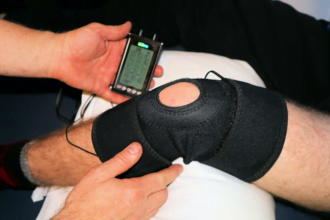Triage refers to prioritizing individuals based on the urgency of their medical needs. Whether they are patients, disaster survivors, or others requiring urgent care. This system ensures that those in critical need receive attention first, considering their condition and available resources.
Performed by EMTs, emergency room staff, battlefield medics, or anyone trained in the process, triage is essential in managing emergencies effectively. This post explores medical triage, its functionality, situations in which it is applied, various types, and advancements shaping its future.
How Medical Triage Works
Every organization has its triage system, which helps determine the priority of care and transportation for individuals. Many of these systems use a color-coded approach to categorize patients based on the urgency of their condition. Here are five common triage levels and their corresponding colors:
- Red: This signifies a critical, life-threatening injury or illness requiring immediate attention. Individuals in this category are often transported first to receive medical care.
- Yellow: Denotes serious injuries that also need urgent care. Some systems prioritize yellow tags for transport first, as these patients may have better recovery chances than red-tagged cases.
- Green: Represents minor or non-critical injuries that are not life-threatening. Transport for these individuals can typically be delayed.
- Black: Indicates someone who is either deceased or has injuries so severe that survival is unlikely. They are given lower priority than those who can still benefit from medical intervention.
- White: Used for individuals with no injuries or illnesses requiring treatment.
This system allows organizations to allocate resources based on severity and urgency effectively, ensuring timely care where needed most. Patients who need intensive acute rehabilitation may still require triage, as their condition could worsen and need immediate attention.
Process of Triage
Triage varies depending on the setting. It operates somewhat differently in a hospital compared to an accident or disaster scene.
Before Hospital
The 2021 National Guidelines for the Field Triage of Injured Patients outline that the initial step for emergency medical services is evaluating injury patterns, mental state, and vital signs. Severe injuries involving the head, spine, torso, neck, or pelvis indicate a high-risk situation classified as “red.” These patients should be taken directly to the highest-level trauma center or stabilized at the nearest hospital before being transferred to a trauma center.
Those meeting “yellow” criteria face moderate risk of serious injury, often determined by how the injury occurred, such as in motor vehicle, bicycle, or pedestrian accidents. Additionally, EMTs may prioritize trauma center care for individuals with risk factors like anticoagulant use, pregnancy, or other medical conditions.
In Hospital
When patients arrive at the emergency room, hospitals rely on triage systems to prioritize care. This is based on the severity of the condition and available resources. Over 70% of emergency departments in the U.S. use the Emergency Severity Index.
Introduced in 1999, the ESI employs a five-level algorithm to categorize patients. Level I represents the most critical cases, while Level V indicates the least urgent. Triage nurses assess patients, set care priorities, and communicate updates to the medical team. They also provide emergency care when required.
Endnote
Each organization develops its own triage system, typically featuring color-coded or numbered categories. Triage can address both short-term and long-term organizational needs by determining the order of care, prioritizing individuals with life-threatening injuries over those with minor ones. The triage system employed by a hospital will differ from that used by emergency medical technicians or in disaster scenarios.










